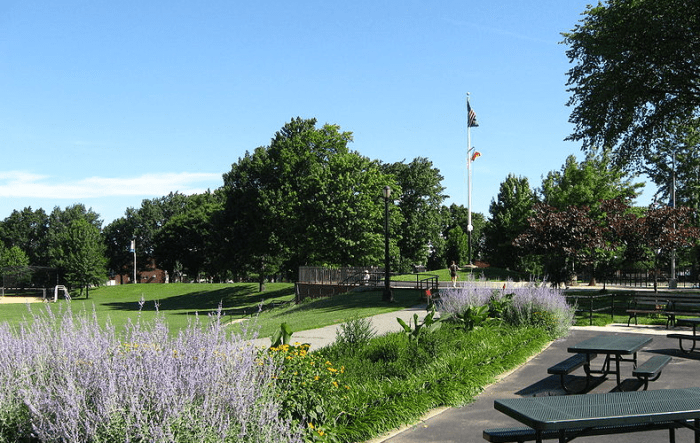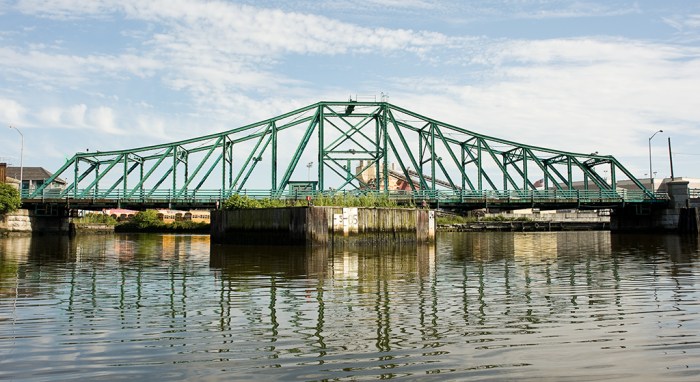By The Greater Astoria Historical Society
It was 1936, the midpoint of the Depression. About 1,500 Queens families on relief could cultivate some of the 5,000 “subsistence gardens” in the borough. The gardens were open to all on home relief, those on work relief who did not receive supplemental home relief and those on work relief receiving only the minimum security wage of $60.50 a month.
The plots were at 164th Street and 73rd Avenue in Flushing and at 69th Street and Elliot Avenue in Maspeth. The Works Progress Administration plowed and seeded the gardens and provided tools, supplies and instruction on the care of the gardens and the harvesting of crops. It also did the canning of the families’ surplus. Sale of the produce was forbidden. The New Deal, which was able to reach families directly, teach a skill and provide needed food and nutrition was a government program that worked.
l
On April 6, a small crowd of the curious gathered outside the Fresh Pond Crematory in Maspeth. Bruno Richard Hauptmann was to be cremated after his execution in the New Jersey electric chair for the kidnapping and murder of Charles Augustus Lindbergh Jr., the Lindbergh baby.
But by the time of the memorial service, the crowd had grown to more than 2,000. A detachment of 28 policemen and six detectives were dispatched to keep order. The services were held in secret because New Jersey did not permit a public funeral for an executed felon, and Mrs. Hauptmann had agreed to the rule to get her husband’s body out of state. She hoped to return his ashes to his native Germany.
l
St. John’s University in Brooklyn purchased a 100-acre tract of land, bounded by the Grand Central Parkway, Union Turnpike, 168th Street and Utopia Parkway, in the Flushing-Hillcrest section of North Jamaica.
The school intended to build a new university in Queens because its eight colleges had outgrown their buildings in Brooklyn. No date was set for the beginning of construction. St. John’s, founded in 1870, was ranked second among Catholic universities in the country. It was the largest educational institution on Long Island. Since 1932, its School of Law was the largest in the world.
l
In transportation and infrastructure-related news, Col. Paul Loese, director of the Triborough Bridge Authority, announced that the Triborough Bridge would open as scheduled July 10, in spite of WPA’s refusal to extend the work week from 30 to 40 hours.
Also, William Friedman, of the city Tunnel Authority, announced that work was ready to begin on the Queens-Midtown Tunnel within a few days. Although Manhattan Borough President Samuel Levy had proposed to build a bridge, the Queens borough president and Queens Chamber of Commerce won out with their tunnel idea.
George McAneny, president of the New York World’s Fair Corp., commented, “I hope that the tunnel is finished, and whether it is completed for the World’s Fair or not, it will be finished eventually. It is necessary in the growth of Queens.”
l
On April 22, Grover Whalen was named chairman of the World’s Fair Corp. McAneny remained as president. The corporation awaited formal action by the city and state to make funds available for starting construction. The state Legislature also had to pass the enabling act authorizing the city to lease the land in Flushing Meadows Corona Park.
l
Comedian Jimmy Durante had to travel from his home in Flushing to Municipal Court in Manhattan.
He was accused of breaking a microphone and kicking out footlights at a recent performance at the Hotel Lismore, in Manhattan. In his defense, Durante claimed he had begun to sing and became “tangled up with the mike and somebody kicked the stuffing out of the footlights.”
Other testimony revealed that Durante’s behavior was justified when someone insinuated that his “schnozzie,” as he called his nose, was too big to allow him to get close to the microphone.
The judge evidently thought so, too, and Durante left the courtroom the winner by a nose.
































